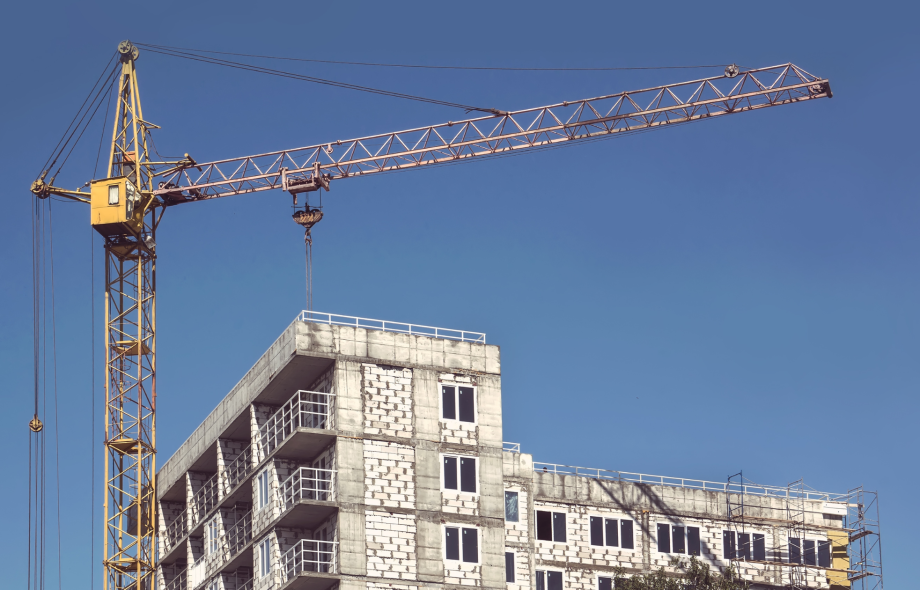The Indian construction industry is booming, and with this growth comes the ever-increasing need for efficient and safe methods of moving and lifting heavy materials. Cranes are the backbone of any construction project, and selecting the right type of crane for the job is crucial for ensuring timely completion and worker safety.
If you’re looking for a reliable crane manufacturer in Ahmedabad, there are several reputable companies to choose from. However, before you start shopping around, it’s important to understand the different types of cranes available and how they can be used to benefit your construction project.
Jib Crane
Jib cranes are a versatile type of crane that is perfect for a variety of construction applications. They are known for their compact size and maneuverability, making them ideal for use in tight spaces or for projects with limited lifting heights.
-
Features and Benefits of Jib Cranes:
-
-
- Compact size: Jib cranes can be mounted on floors, walls, or even mobile bases, making them ideal for use in confined spaces.
- Maneuverability: Jib cranes have a wide range of motion, allowing for precise lifting and placement of materials.
- Easy to operate: Jib cranes are relatively simple to operate, making them a good option for crews with limited experience.
- Cost-effective: Jib cranes are typically less expensive than other types of cranes, making them a good option for budget-conscious projects.
-
-
Applications of Jib Cranes in Construction:
-
- Lifting and placing HVAC units
- Installing roofing materials
- Loading and unloading trucks
- Moving materials around a worksite
- Supporting assembly lines
Types of Jib Cranes
There are several different types of jib cranes available, each with its own unique advantages:
- Fixed-mount jib cranes: These cranes are permanently mounted to a floor, wall, or column. They are a good option for applications that require frequent lifting in a specific area.
- Freestanding jib cranes: These cranes are self-supporting and do not require any permanent mounting. They are a good option for temporary applications or for use in areas where there is no suitable structure for mounting a fixed-mount jib crane.
- Articulating jib cranes: These cranes have an arm that can bend or pivot, providing a wider range of motion than fixed-mount or freestanding jib cranes.
- Mast-mounted jib cranes: These cranes are mounted on a mast, which allows them to be raised or lowered to different heights. This makes them a good option for applications that require lifting materials to different levels.
Gantry Cranes
Gantry cranes are another popular type of crane used in construction. They are known for their ability to lift and move heavy materials over long distances.
- Features and Benefits of Gantry Cranes:
- Large lifting capacity: Gantry cranes can lift significantly heavier loads than jib cranes.
- Long span: Gantry cranes can span a wide area, making them ideal for lifting materials across large distances.
- High lifting height: Gantry cranes can lift materials to high heights, making them suitable for use on multi-story construction projects.
- Modular design: Gantry cranes can be modular, allowing them to be customized to meet the specific needs of a project.
- Applications of Gantry Cranes in Construction:
- Erecting prefabricated structures
- Installing bridge beams
- Placing heavy machinery
- Loading and unloading precast concrete panels
- Supporting suspended work platforms
Types of Gantry Cranes
There are several different types of gantry cranes available, each with its own unique advantages:
- Double-girder gantry cranes: These cranes have two main beams that support the hoist and trolley. They are a good option for heavy-duty applications.
- Single-girder gantry cranes: These cranes have a single main beam that supports the hoist and trolley. They are a good option for lighter-duty applications or for applications where headroom is limited.
- RTG (rubber-tired gantry) cranes: These cranes are self-propelled and do not require any rails or tracks. They are a good option for use on uneven surfaces or for applications that require frequent movement of the crane.
- Overhead gantry cranes: These cranes are suspended from a runway system that is mounted on the ceiling or roof of a building. They are a good option for applications that require precise movement of the crane along a fixed path.
Choosing the Right Crane for Your Construction Project
When selecting a crane for your construction project, it’s important to consider the following factors:
- Lifting capacity: Determine the maximum weight of the materials that need to be lifted.
- Lifting height: Determine the maximum height to which materials need to be lifted.
- Span: Determine the distance between the crane’s legs or columns.
- Work area: Consider the size and layout of the work area.
- Budget: Set a budget for the crane rental or purchase.
- Safety requirements: Ensure that the crane meets all relevant safety standards.
By carefully considering these factors, you can select the right type of crane for your construction project and ensure that your work is completed safely and efficiently.
Conclusion
Cranes are essential tools for the construction industry, and selecting the right type of crane for a project is crucial for ensuring safety, efficiency, and productivity. By understanding the different types of cranes available, their features, and their applications, construction professionals can make informed decisions and choose the best crane for their specific needs.
 :
https://www.hoistsandcrane.com/
:
https://www.hoistsandcrane.com/












